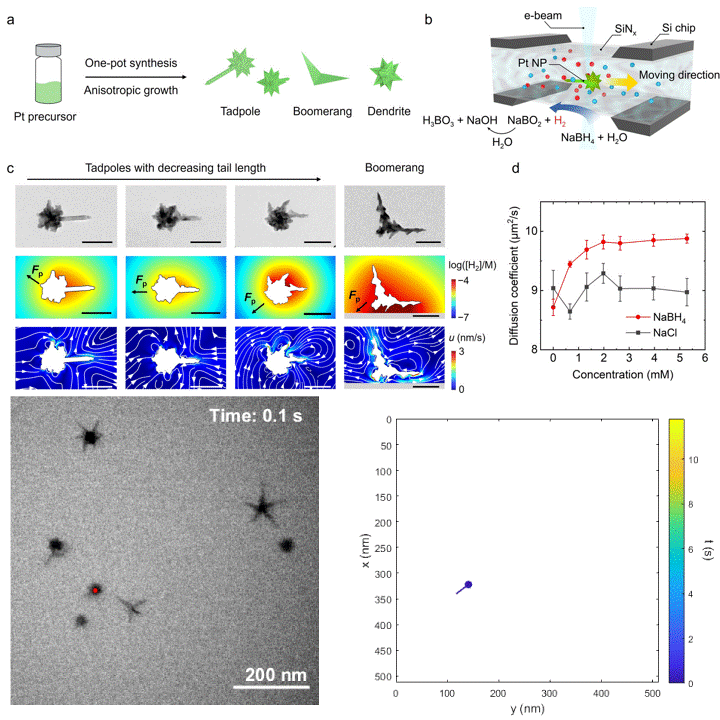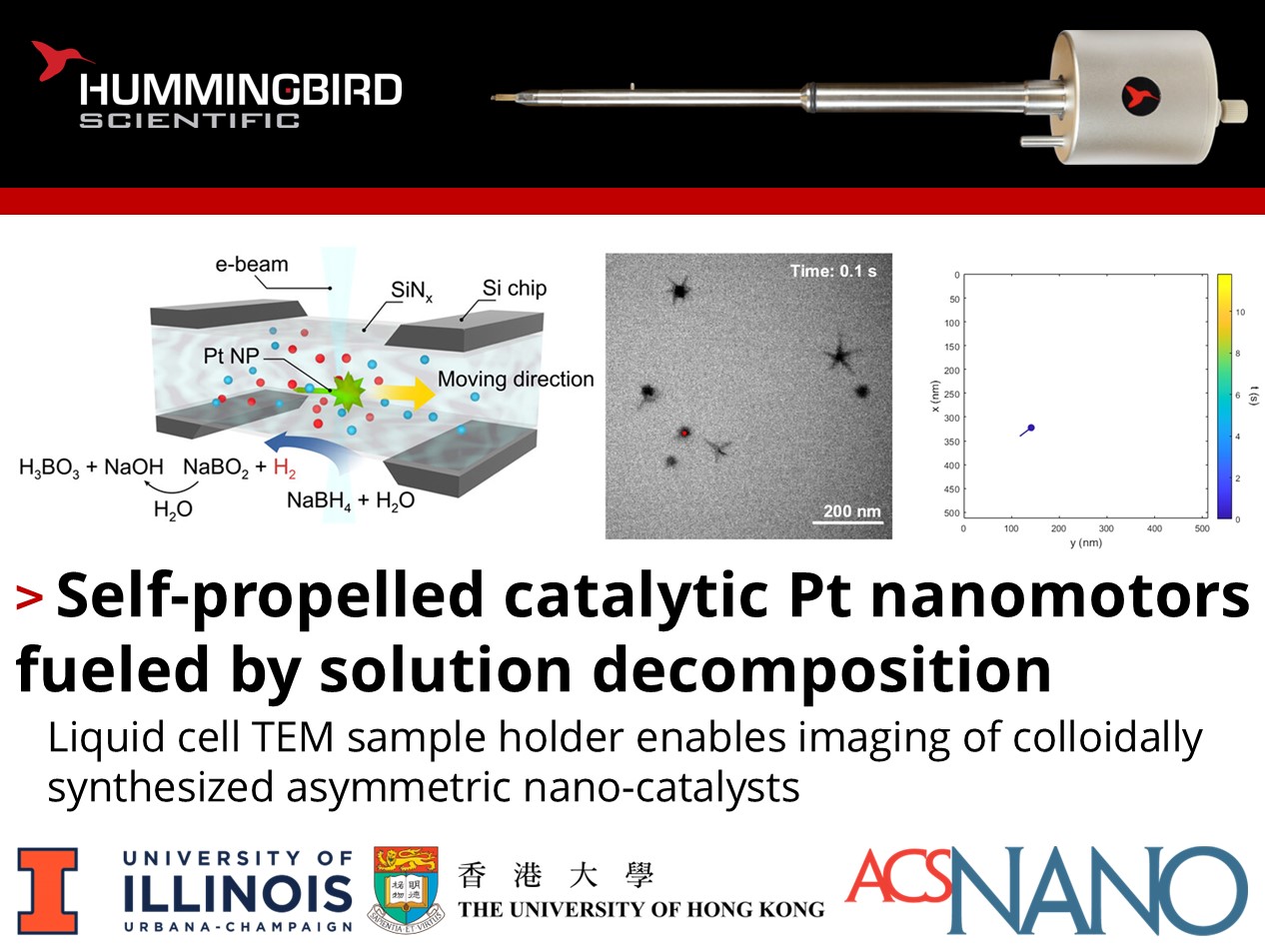How is nanomotor motion fueled?
Zhiheng Lyu, Qian Chen, and their colleagues at the University of Illinois−Urbana Champaign and the University of Hong Kong published recent work using their Hummingbird Scientific in-situ liquid flow TEM sample holder to investigate the motion of ultrasmall (<100 nm) self-propelled Pt-catalyst nanomotors of various asymmetrical shapes under fueled and unfueled conditions. Statistical analysis of the nanomotor trajectories is coupled with finite element simulation to reveal the influence of colloidal design and fundamental forces that distinguish the observed motion from random Brownian motion.

Colloidal synthesis of Pt U-motors and FEA simulation of the chemical gradient surrounding them in the presence of NaBH4 fuel. a) Schematic of one-pot synthesis of Pt NPs with varied shapes, including asymmetric shapes such as tadpoles and boomerangs and symmetric shapes such as dendrites. b) Schematic showing liquid cell TEM imaging of the self-propelled motion of Pt NPs. c) TEM images of Pt NPs (top), simulated H2 concentration (middle) and the magnitude of diffusioosmotic flow velocity around them (bottom). Scale bars: 50 nm. d) Diffusion coefficients of Pt NPs in NaBH4 and NaCl solutions measured by dynamic light scattering (DLS). e) Liquid-phase TEM video and f) corresponding centroid position trajectory overlaid with instantaneous NP orientation showing the directional, self-propelled motion of T1 in 1.98 mM NaBH4; dose rate: 35.4 e–/(Å2·s) Copyright 2024 American Chemical Society
Pt nanoparticles with asymmetric shapes were imaged at nanometer resolution. The motion of these “tadpole” or “boomerang” shapes is driven by an H2 gradient arising from their catalyzed decomposition of NaBH4 solution in the liquid cell. The holder enabled tracking and statistical analysis of the orientation and trajectories of particles, revealing that the asymmetry of the shapes alone is sufficient to induce forces which act against and override Brownian forces. Based on the analysis of more than 180 nanoparticles, the effects of particle size, surface heterogeneity, and morphology on the self-diffusiophoresis mechanism were distinguished. The work will inform development of more stable and efficient self-propelled nano-catalyst systems for ultrasmall nanomachines.
Reference:
Zhiheng Lyu, Lehan Yao, Zhisheng Wang, Chang Qian, Zuochen Wang, Jiahui Li, Chang Liu, Yufeng Wang, and Qian Chen, ACS Nano 18 (22) 14231–14243 (2024) DOI: 10.1021/acsnano.3c12590
Full paper Copyright © 2024 American Chemical Society
View All News

